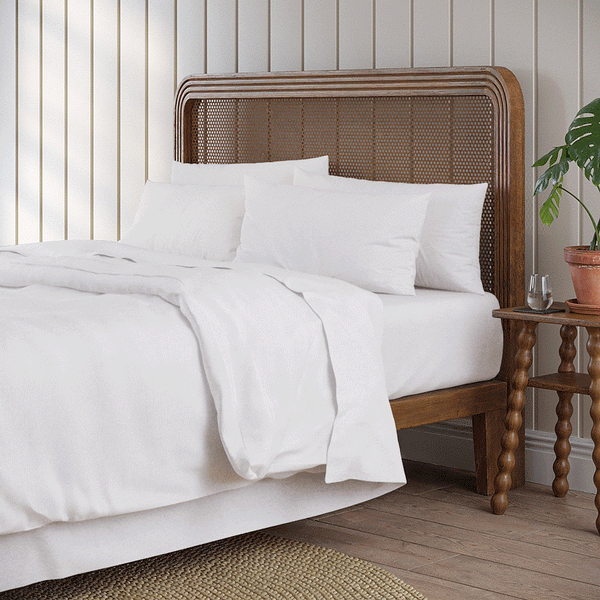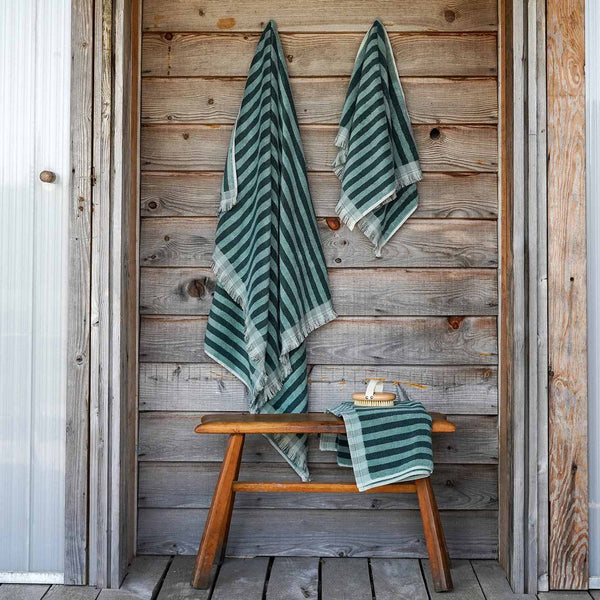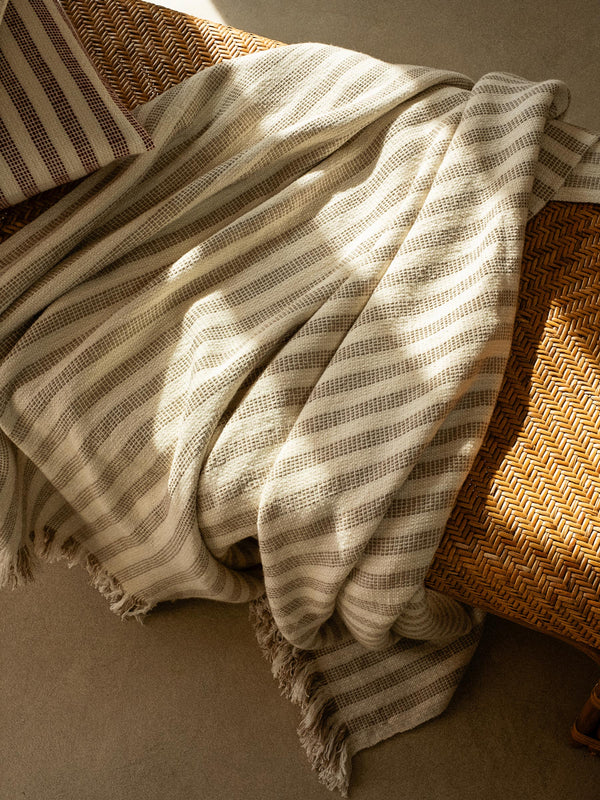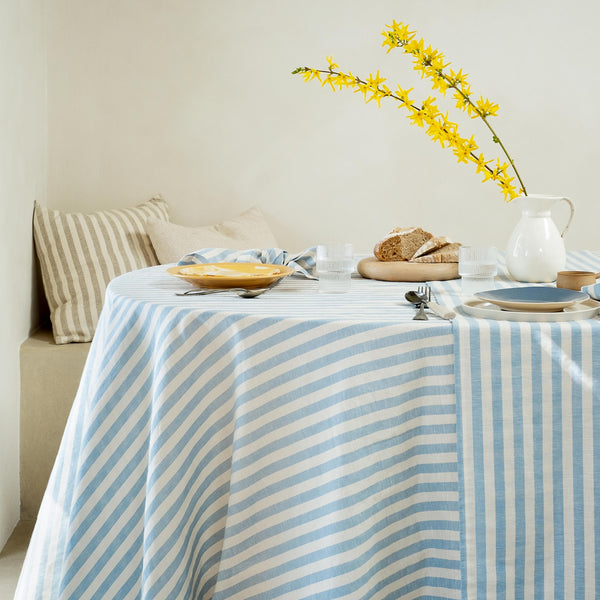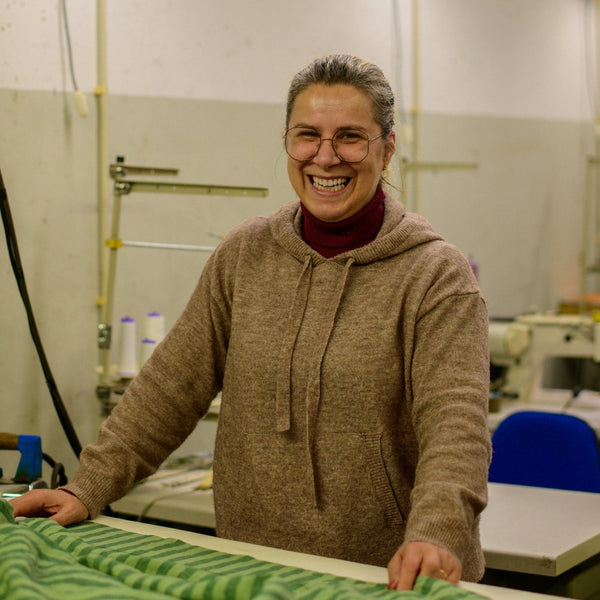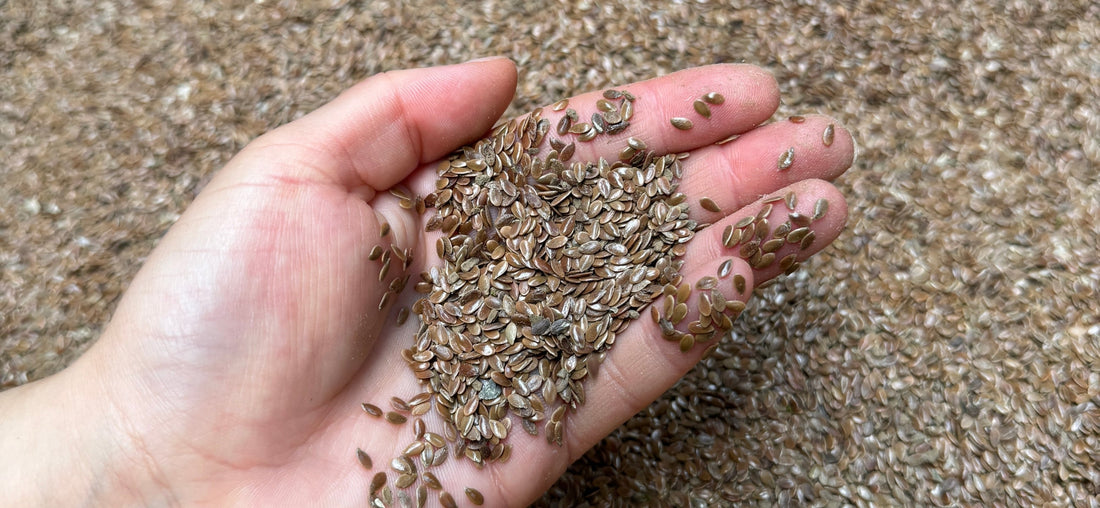At Piglet in Bed, we’ve always championed 100% certified European flax linen for its natural beauty, breathability, and durability. But earlier this year, we decided to go beyond the label - travelling to Belgium, one of the world’s most celebrated flax-growing regions, to follow our linen’s journey from seed to sheet.
Blue Blossoms to Golden Fields
In March and April, Belgian farmers sow their flax, which takes about 120 days to grow. For a single, magical day each year, the fields bloom into delicate blue flowers - a fleeting spectacle that quickly gives way to seed pods. Unlike most crops, flax is never cut. Instead, it’s gently pulled from the ground to protect the long, silky fibers that run along the stem.
Once harvested, the plants are laid in rows to dry. Farmers wait for the perfect mix of sunshine and rain to begin retting - a natural process where moisture loosens the fibers from their woody core. The stalks turn a warm golden color, and after a third gentle rain, the flax is gathered up, ready for the mill.

Farming with Nature in Mind
Belgian flax growers balance centuries-old tradition with modern innovation. They minimise pesticide use, replacing chemicals with biological treatments and planting disease-resistant varieties. High-tech tools like satellites and drones help them monitor each field’s health, allowing them to work in harmony with the land.
Almost Nothing Goes to Waste
At the scutching mill, we watched as huge rollers separated the fibers from the woody core. The best long fibers are baled up, ready to become linen yarn.
From a single harvest, farmers produce four valuable products:
-
Seeds for next year’s crop
-
Long fibers for weaving our linen
-
Short fibers for products like paper (even US dollar bills contain flax!)
-
The woody core or shavings, which become animal bedding or biofuel
From Fibre to Fabric
Our final stop was the weaving mill, where each batch of yarn is strength-tested in the lab before being spun. Dry spinning produces a coarse, sturdy yarn for upholstery, while wet spinning creates a finer, lustrous thread often used for clothing.
After weaving, the fabric is shaved with circular knives to remove any leftover fluff. Then, every single metre is checked by hand - imperfections are carefully fixed by skilled weavers who can oversee a dozen looms at once. Linen fibers are famously temperamental, prone to breaking if neglected, so it requires constant care and attention.

Why It Matters
Seeing our linen’s journey up close left us in awe of the craft and care behind every piece we sell. From the farmers who know each field like an old friend to the weavers who perfect every detail, it’s a process rooted in both tradition and innovation.
So the next time you slide between your Piglet in Bed linen sheets, you’ll know they began in golden Belgian fields, guided by the weather, sown by hand, and perfected by people whose lives are woven into every fiber.

